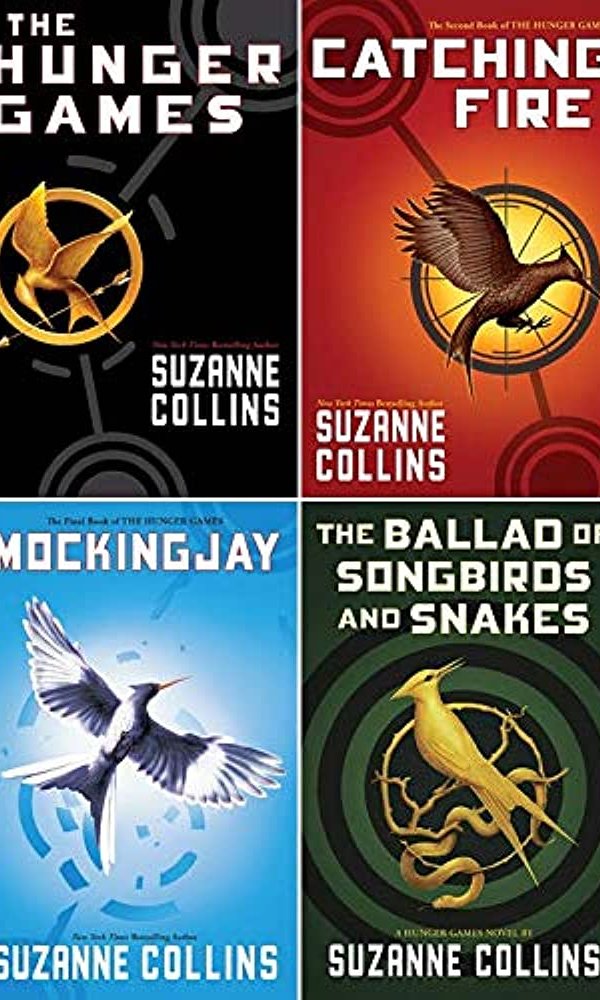Dystopian Books: A Haunting Look At The Future

Disclaimer
This post may contain affiliate links. I will make a small commission if you make a purchase through one of these links, at no extra cost to you. See full disclosure and disclaimer policy HERE.
Dystopian literature has been a popular genre for centuries, captivating readers with its chilling and cautionary tales of what the future could hold. Dystopian books have always captured our imagination with their dark and eerie depictions of a world gone wrong. In this article, we will explore some of the most popular dystopian books of all time, and through examining these books, we will explore the themes and ideas that make dystopian literature so compelling.
Table of Contents
- Most Popular Dystopian Books Of All Times
- 1984 by George Orwell
- Brave New World by Aldous Huxley
- The Hunger Games series by Suzanne Collins
- Fahrenheit 451 by Ray Bradbury
- The Maze Runner series by James Dashner
- Divergent series by Veronica Roth
- The Giver by Lois Lowry
- The Children of Men by P.D. James
- The Handmaid's Tale by Margaret Atwood
- The Road by Cormac McCarthy
- Conclusion
- FAQs
Dystopian books offers readers a glimpse into the dark, imagined futures where society has broken down and the world as we know it no longer exists. These novels explore important themes and ideas that are relevant to our world today. Here we will take a closer look at some of the most iconic dystopian novels, and we will examine the themes and ideas that these novels explore, as well as their impact on popular culture and the wider literary landscape.
Most Popular Dystopian Books Of All Times
1984 by George Orwell
1984 is a dystopian novel published in 1949 by British author George Orwell. The book is set in a totalitarian society in which the government has total control over every aspect of citizens’ lives. The protagonist, Winston Smith, struggles to resist the all-powerful Party and its leader, Big Brother.
RELATED:
Review: The Unsettling (Yet Awesome) 1984 by George Orwell
Brave New World by Aldous Huxley
Brave New World is a dystopian novel published in 1932 by British author Aldous Huxley. The book is set in a future society in which citizens are conditioned from birth to accept their predetermined roles in a hierarchical social order.
The novel explores themes of individuality, conformity, and the dangers of a society that values pleasure over truth.
RELATED:
Review: The Dystopian Brave New World by Aldous Huxley
The Hunger Games series by Suzanne Collins
The Hunger Games is a series of dystopian novels published between 2008 and 2010 by American author Suzanne Collins. The books are set in a future society known as Panem, in which the government forces children to compete in a televised battle to the death known as the Hunger Games. The series explores themes of survival, sacrifice, and rebellion.
Fahrenheit 451 by Ray Bradbury
Fahrenheit 451 is a dystopian novel published in 1953 by American author Ray Bradbury. The book is set in a future society in which books are banned and “firemen” are tasked with burning any books that are found.
The novel explores themes of censorship, knowledge, and the power of literature.
RELATED:
Review: The Relevant Fahrenheit 451 by Ray Bradbury
The Maze Runner series by James Dashner
The Maze Runner is a series of dystopian novels published between 2009 and 2011 by American author James Dashner. The books are set in a future society in which a group of teenagers are trapped in a maze and forced to solve puzzles in order to survive.
The series explores themes of survival, identity, and trust.
Divergent series by Veronica Roth
Divergent is a series of dystopian novels published between 2011 and 2013 by American author Veronica Roth. The books are set in a future society in which citizens are divided into factions based on their personality traits. The series follows the story of Tris Prior, a young woman who discovers that she is “Divergent,” meaning she doesn’t fit into any one faction.
The novels explore themes of conformity, identity, and the dangers of a society that values conformity over individuality.
The Giver by Lois Lowry
The Giver is a classic dystopian novel that was published in 1993. The story takes place in a seemingly perfect society where everything is controlled and predetermined, from the colour of people’s clothing to their jobs and even their families. The protagonist of the story, Jonas, is a 12-year-old boy who is chosen to be the Receiver of Memory, a position of great honour and responsibility. As he begins his training with the previous Receiver of Memory, he starts to uncover the dark secrets that lie beneath the surface of his seemingly perfect world.
The novel explores themes such as individuality, freedom, and the price of perfection. It raises important questions about the role of the individual in society, and the importance of memories and emotions in human experience.
The Children of Men by P.D. James
The Children of Men is a dystopian novel published in 1992. The story takes place in a future world where no children have been born for 25 years, leading to a global crisis and societal collapse. The protagonist, Theo Faron, is a former history professor who is approached by a group of rebels seeking his help in transporting a pregnant woman to safety.
The novel explores themes such as hope, despair, and the human capacity for violence. It raises important questions about the nature of humanity and our relationship with the world around us.
The Handmaid’s Tale by Margaret Atwood
The Handmaid’s Tale is a dystopian novel by Margaret Atwood that was published in 1985. The novel is set in the fictional Republic of Gilead, which is a totalitarian and theocratic state that has replaced the United States. The story follows Offred, a handmaid who is forced to bear children for the Commander and his wife.
The novel explores themes of feminism, oppression, and the importance of individuality.
RELATED:
Why You Should Read Margaret Atwood: Her Best Novels
The Road by Cormac McCarthy
The Road is a post-apocalyptic novel by Cormac McCarthy that was published in 2006. The novel is set in a world that has been destroyed by an unspecified cataclysmic event. The story follows a father and his son as they travel south in search of a safe place to live.
The novel explores themes of survival, humanity, and the importance of hope.
RELATED:
Why You Should Read Cormac McCarthy: His Best Novels
Conclusion
Dystopian literature serves as a warning to society about the dangers of totalitarianism and the importance of individual freedom. The books listed in this article are all great examples of the dystopian genre. Each book explores different themes and ideas, but they all share the common thread of warning readers about the dangers of oppressive regimes and the importance of individual freedom.
While these books are all works of fiction, they serve as a reminder that we must remain vigilant against the threat of totalitarianism in our own world. By reading these books and learning from the cautionary tales they offer, we can better understand the importance of protecting our individual freedoms and standing up against oppression in all its forms.




















